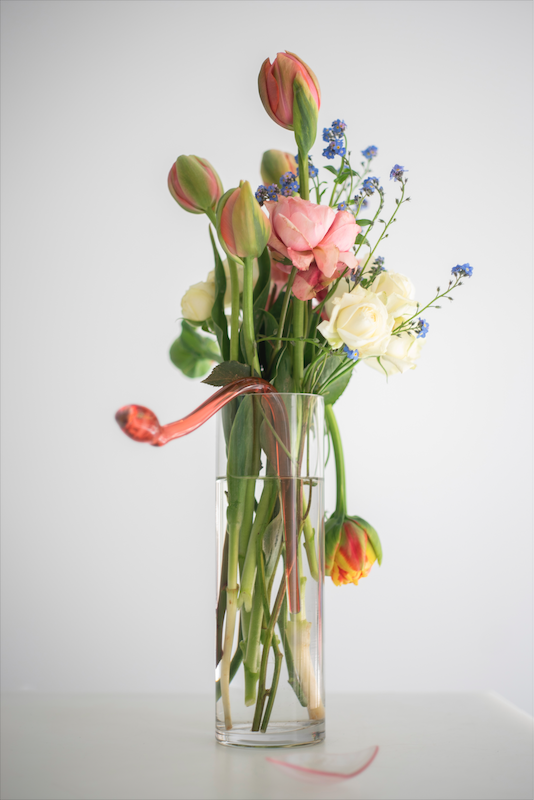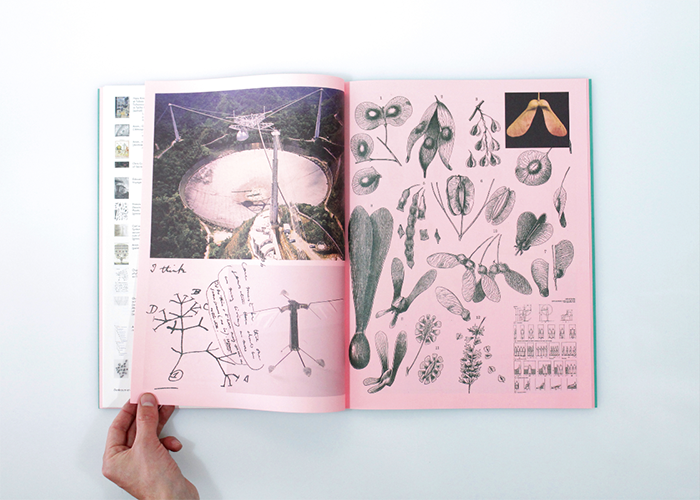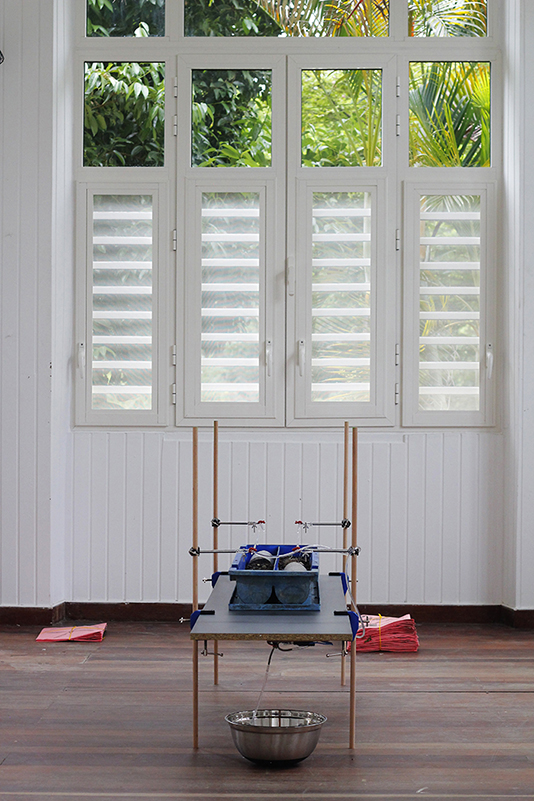The 21st century starts with a major turning point in the human - and probably even life – history on Earth. I have been observing the world through various prisms with eyes wide open. Disciplines such as anthropology, economy, biology, history(ies), myths or astrophysics provide a background for the appraisal of upcoming catastrophes as well as a mean to seek how to tackle those catastrophes through a different approach towards life.
While inquiring into the power of language and pictures disseminated by the regimes, I create installations, volumes, prints, videos or book editing to seize our living conditions key paradoxes and to explore brand-new living areas.
⁓⁓⁓⁓⁓⁓⁓⁓
⁓Premiers Bourgeons
at Poush Manifesto
2022
How is life being converted into a resource and nature into an item? This project started when I tried to decipher how the human natural interest for producing tools and objects led western societies to consider the whole world as an unlimited resource. It started five centuries ago with capitalism, and eventually led to both environmental and social crises as described in the plantationocene. As a consequence, the way our spaces, human/non-human groups or environments used to be considered has now disappeared.
This exhibition entitled Premier Bourgeon is part of my research on how natural elements are transformed into manufactured products. My art work here is not totally natural anymore nor yet crafted but stands at an edge between the tree and the end product; it is raw material. Coming from different places and times it spells out the violence behind a peaceful day-to-day appearance.

⁓Anémochorie Volet 1
At
Confort Mental
2021
When I acknowledged the paradoxes between the traditional symbolism of the cut flower - conveying love - in western countries versus its current production process – in developing countries - and marketing, in cooperation with curator Fiona Vilmer, I tried to identify the assets of globalization. The flower proves to be quite ambivalent as it shows the violence of capitalizing on plants while arousing subtle emotions.
Based on a selection of sixteen famous nature morte I reassembled sixteen bunches of fresh flowers which served as models for those paintings. Through this re-creation these bouquets show how and where they were produced at different times and places.
The bunches of flowers are surrounded by four bottles of perfume, made from the same variety of roses – the Red Naomie – whose fragrance only differs from where the rose was cultivated, therefore labelled as “parfum de terroir”.
Also a painted wooden board serving as a benchmark for the size of the flowers cultivated in Colombia leans against one of the walls. While of delicate and handicraft appearance, this item shows how plants are standardized and industrialized.

⁓Anémochorie - Publication 2021 The Anémochorie publication comes along with the Anémochorie exhibition and brings the project background to light. While the exhibition investigates how living organisms travel in the context of globalization, the publication further develops these concepts with texts and pictures. With a foreword by Fiona Vilmer, it displays a sort of iconographic anadiplosis with detailed captions. The book was edited by graphic design studio officeabc and Sarah Vadé and 500 copies were printed.
Later on, 130 unbound copies provided 1300 sheets to produce a herbarium for step 2 of the project in Martinique as described below.

⁓Anémochorie Volet 2
At
Station Culturelle 2021
Anémochorie 1 addressed the greenhouse cultivation for the industrial production and marketing of cut flowers in the context of capitalism while Anémochorie 2 investigates the use of the nineteenth century botanic gardens as a mean for spreading plants across the world and as a tool for the appropriation of territories for natural studies. The old Jardin Colonial des Plantes (Colonial Botanic Garden) in Saint-Pierre de la Martinique was destroyed by the 1902 Pelée Mountain eruption and is now a thick forest which has been untouched for over a century. The story built from beneath the trees’ roots all the way up to their canopy turns this forest into a new garden. Here nature which once was an object now becomes a subject. I created a dialogue between two acts.
The first one consists in a herbarium widely inspired from the usual method. It consists in approximately 1300 collected plant samples arranged in the Anémochorie publication sheets. Each plant was collected on the site of the old Jardin Colonial des Plantes. These live plants are hidden between the sheets to dry, almost invisible.
The second act consists in a deep search in the garden’s soil. A 4 meter long core sample was drilled in order to bring to light the garden’s history. Here simple earth from the depth of the ground gives an idea of the past time via its successive layers. Present lays above while past lays deep. In between, successively lay the Carib’s era, the Native Americans era, the dark centuries of slavery and domination, the Pelée Mountain eruptions and all these forgotten stories which do not appear in the official History. This piece of earth/history lays horizontally and is equipped with a watering system aimed at fostering the germination of dormant seeds which lingered there for months, years or maybe even centuries. These seeds may be able to express themselves without words across the time layers, showing their incredible resilience and delicacy.

Faune, Alice Savoie / Cnap




